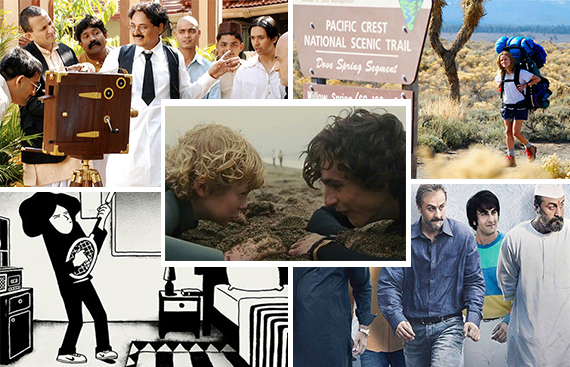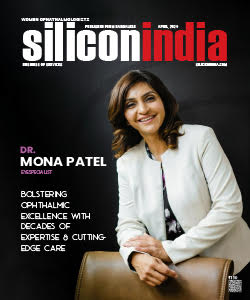From Wild to Harishchandrachi Factory: A Curious Case of Memoirs

Movies, per se, have changed the course in history, and have literally narrated the history. What I mean, is that, forms of movies like Biopics, Memoirs, Biographies, Documentaries, have re-presented a ‘life’ in a more inspiring way that the life itself. We can agree to disagree on that. The Moviebuffs will know.
One cannot stress it enough that entertainment plays a vital role in the adaptation of any trend be it fashion or a lifestyle altogether. So far so good, the source, itself has also gone with numerous adaptations. One of that is the adaptation of its narrative forms.
Usually, stories are categories with their narrative forms which are fiction and non-fiction in any medium. Either for books or movies, fictional stories consist of different genres such as mystery, romance, fantasy, historical, or science fiction. While a large percentage of the bestsellers books, as well as best acknowledged movies, are non-fictional. Nonfiction, like fiction, covers a wide collection of subjects. What unites all nonfiction narrative form is that they’re true stories. Fiction is made-up, purely the creation of an author’s imagination, though influenced by real life. Nonfiction, therefore, is not made up.
Well, the non-fiction narrative form is a very appealing approach. Just like fiction, it has a lot of different genres such as memoir, autobiography, biography, cultural criticism/responses, history/law/political, true crime/investigative, humour, scientific, religious, cookbooks, self-help/motivational.
Out of these, there is a huge confusion among memoir, autobiography, and biography. And it’s not surprising because all are about the life of the narrator. However, the main difference is that memoirs do not span the entire life of the narrator. It is comprised of stories or experiences from the life of the narrator that are tied together with an overarching theme or idea. However, an autobiography tells the narrator’s life story, whether there’s a unifying theme or not. Most importantly it is written by the author, itself. Whereas, a biography is the story of an influential figure’s life written or narrated by another person.
The adaptation of memoir to the big screen is quite lesser than the novels and short stories. Despite that, here is a list of some of the memoir-to-movies to introduce you to the genre.
1. Beautiful Boy (2018)
![]()
Beautiful Boy is an American movie, based on the best-selling pair of memoirs from father and son, David and Nic Sheff, respectively. One of the memoirs is Beautiful Boy: A Father's Journey Through His Son's Addiction, from father David Sheff's perspective.
“A world of contradictions, wherein everything is gray and almost nothing is black and white.” - David Sheff, Beautiful Boy: A Father's Journey Through His Son's Addiction
The other is Tweak: Growing Up on Methamphetamines, written by Nic Scheff, David's son. The two books chronicles Nic's spiral into the world of meth, crime, homelessness, and, ultimately, his journey towards lasting sobriety. The heartbreaking and inspiring journey inspires the viewers to overcome their problems.
2. Sanju (2018)
![]()
Sanju is a biopic of the controversial life of Bollywood actor Sanjay Dutt, his film career, jail sentence and personal life. It can also call a memoir because, unlike his bio- graphy, Sanjay Dutt: The Crazy Untold Story of Bollywood's Bad Boy, it comprises his stories and experiences that are especially connected with the theme of transformation of his public image.
“Apna life full saanp seedi ka board hai ... kabhi up toh kabhi down”
(My life is like the board of a snakes and ladders game ... sometimes it goes up and sometimes it comes down) – Sanju (2018)
Sanjay Dutt’s fans admire Ranbir Kapoor’s act as Sanjay Dutt and sympathise with his troublesome part of the story.
3. Wild (2014)
![]()
Wild is an American film, based on Cheryl Strayed’s memoir Wild: From Lost to Found on the Pacific Crest Trail (2012).
It is a story of Cheryl Strayed’s solo hike of one thousand one hundred miles, initiated as a way to recover from deep depression.
“The universe, I'd learned, was never, ever kidding. It would take whatever it wanted and it would never give it back.” - Wild
The reason for her depression was the death of her mother at a young age. It made her fall into numerous problems and drugs addicted person, which had affected her personal life.
4. Harishchandrachi factory (2009)
![]()
Harishchandrachi Factory is a complete pleasure. The film tells the story of Dadasaheb Phalke, well-known as the father of Indian cinema, and how he came to make the first Indian film, Raja Harishchandra in 1913, India’s first B&W silent film.
The film is in Marathi language; however, it has been entered for Oscar's foreign-language film competition.
Apparently, the story in the film is also the story of the film. It is a memoir because it presents only the projection of India's first film, instead of the exploration of Phalke’s complete journey of making several films and died as a forgotten man in 1944.
5. Persepolis (2007)
![]()
Persepolis is an animated film, based on Marjane Satrapi’s wonderful graphic memoir about coming of age as a progressive girl in Iran. It managed to certifiably maintain its brilliance on the big screen. The movie was honest to the book, entertaining to the last, moreover suggestive without being preachy.
The film was an international co-production made by companies in France and Iran.
It was screened at the 2007 Cannes Film Festival and co-won the Jury Prize, along with Silent Light. In honour of the award, Satrapi said “Although this film is universal, I wish to dedicate the prize to all Iranians.”
“I wanted to be justice, love and the wrath of God all in one.” - Marjane Satrapi, Persepolis: The Story of a Childhood
A good memoir doesn’t gloss over the truth; focus on the transforming phase of life which encourages the audience to not lose patience in their difficult time.
The important thing to do is to write/narrate so that readers can connect with the narrator’s inner universe of thoughts and feelings in the context of the own life.

.jpg)

